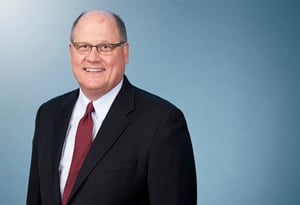Supreme Court Decides EPA v. EME Homer City Generation, L.P.
On April 29, 2014, the Supreme Court decided EPA v. EME Homer City Generation, L.P., No. 12-1182, holding that the Clean Air Act (CAA) does not require that states be given a second opportunity to file a state implementation plan (SIP) after EPA has quantified the state's interstate pollution obligations under the Good Neighbor Provision of the CAA, and that EPA's allocation of emissions reductions among upwind states is a permissible, workable, and equitable interpretation of the Good Neighbor Provision.
The CAA tasks EPA with regulating a complex problem: air pollution emitted in one state but causing harm in other states. This obligation arises in part from the mandate to establish national ambient air quality standards (NAAQS) for emissions. Left unregulated, emitting, or upwind, states may reap the benefits of the economic activity causing the pollution without bearing all the costs; conversely, downwind states may be unable to achieve clean air because of the influx of out-of-state pollution they lack authority to control. To address this problem, Congress included a Good Neighbor Provision in the CAA, instructing states to prohibit in-state sources "from emitting any air pollutant in amounts which will…contribute significantly" to downwind states' "nonattainment…or interfere with maintenance" of any EPA-promulgated national air quality standard. 42 U.S.C. § 7410(a)(2)(D)(i).
The NAAQS framework is scientifically complex, and the CAA requires a cooperative federalism approach to solving air quality problems. Once EPA establishes NAAQS, EPA then must designate nonattainment areas—locations where the concentration of a regulated pollutant exceeds the NAAQS. The CAA then shifts the burden to states to propose state implementation plans (SIPs) adequate for compliance within three years of any new or revised NAAQS. If a state fails to submit an adequate SIP, EPA is required to promulgate a federal implementation plan (FIP) within two years of EPA's determination of inadequacy. The Good Neighbor Provision falls within this framework.
EPA's Transport Rule is the current regulatory implementation of the Good Neighbor Provision requirements. The Transport Rule attempts to limit ozone and particulate matter pollution by regulating nitrogen oxide and sulfur dioxide emissions of 27 upwind states. The goal is achievement of three different NAAQS. The Good Neighbor Rule employs a two-step approach, first screening out upwind states whose downwind pollution contribution does not exceed a certain threshold. The remaining states are subject to a "control" analysis whereby EPA collects data and employs complex modeling to identify "significant cost thresholds" where a "noticeable change occurred in downwind air quality…" The cost thresholds are then converted into amounts of emissions upwind states would be required to eliminate—effectively, an annual emissions budget. Because the Transport Rule is only applied to states with inadequate SIPs, EPA also promulgates a FIP allocating that state's emission budget among its in-state sources.
Petitioners, a group of state and local governments joined by industry and labor groups, challenged the Transport Rule in the U.S. Court of Appeals for the D.C. Circuit. The D.C. Circuit vacated the rule in its entirety, holding that EPA's actions exceeded its statutory authority in two respects—EPA's promulgation of FIPs and its two-step interpretation of the Good Neighbor Provision (screening and control). The Supreme Court granted certiorari to decide whether the D.C. Circuit had accurately construed the limits the CAA places on EPA's authority.
The Supreme Court reversed, holding that the Transport Rule is a reasonable interpretation of an ambiguous statutory provision. With respect to the promulgation of FIPs, the CAA sets out a series of precise guidelines to which states and EPA must adhere. If EPA determines a SIP to be inadequate, the unambiguous statutory language requires EPA to replace it with a FIP within two years. In finding that EPA exceeded its authority, the D.C. Circuit read in a statutory requirement that does not exist and that altered the schedule provided by Congress for SIPs and FIPs.
With respect to EPA's two-step interpretation of the Good Neighbor Provision, the Supreme Court noted that it routinely accords dispositive effect to an agency's reasonable interpretation of ambiguous statutory language. Here, EPA is called upon to address the "thorny causation problem" of how to allocate among multiple contributing upwind states responsibility for a downwind state's excess air emissions. The Good Neighbor Provision does not answer this question, and under Supreme Court jurisprudence, Congress's silence is read as a delegation of authority to EPA to select from among reasonable options. EPA's regulation considers both the magnitude of upwind states' contributions and the cost associated with eliminating them. Using cost "makes good sense" and, "[l]acking a dispositive statutory instruction to guide it, EPA's decision…is a ‘reasonable' way of filling the ‘gap left open by Congress.'"
This decision does not foreclose any state from bringing a particularized, as-applied challenge to the Transport Rule, along with any other as-applied challenges it may have. But because EPA's cost-based methodology, on its face, is not arbitrary, capricious, or manifestly contrary to the statute, the Transport Rule "does not warrant judicial condemnation…in its entirety."
Justice Ginsburg delivered the opinion of the Court, in which Chief Justice Roberts and Justices Kennedy, Breyer, Sotomayor, and Kagan joined. Justice Scalia filed a dissenting opinion, in which Justice Thomas joined. Justice Alito took no part in the consideration or decision of the cases.
The material contained in this communication is informational, general in nature and does not constitute legal advice. The material contained in this communication should not be relied upon or used without consulting a lawyer to consider your specific circumstances. This communication was published on the date specified and may not include any changes in the topics, laws, rules or regulations covered. Receipt of this communication does not establish an attorney-client relationship. In some jurisdictions, this communication may be considered attorney advertising.




